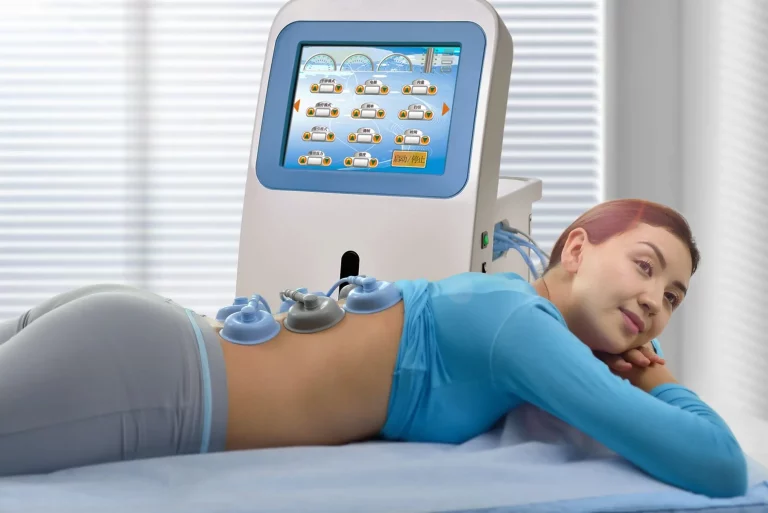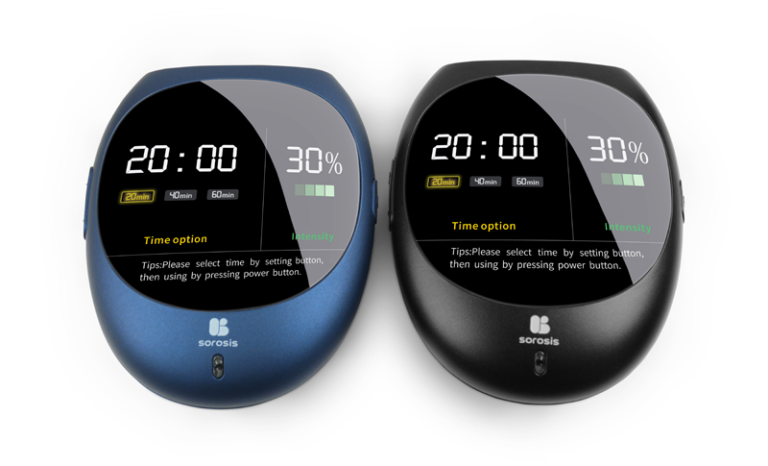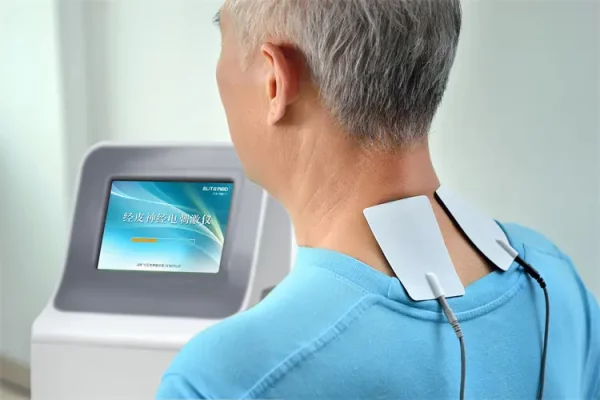A handheld sleep aid device typically uses microcurrent stimulation, vibration pulses, or guided breathing cues to influence the user’s autonomic nervous system, particularly by promoting parasympathetic activity—the system responsible for relaxation and sleep readiness.
Common Mechanisms Used:
- Cranial Electrotherapy Stimulation (CES): Uses low-level electrical pulses to modulate brain activity
- Vibrotactile Feedback: Sends rhythmic pulses to help slow breathing and heart rate
- Light or Audio Guidance: Offers visual or auditory cues to aid in deep relaxation or mindfulness
Scientific data shows CES devices, for example, can reduce sleep latency by up to 35% and improve sleep efficiency in clinical trials.
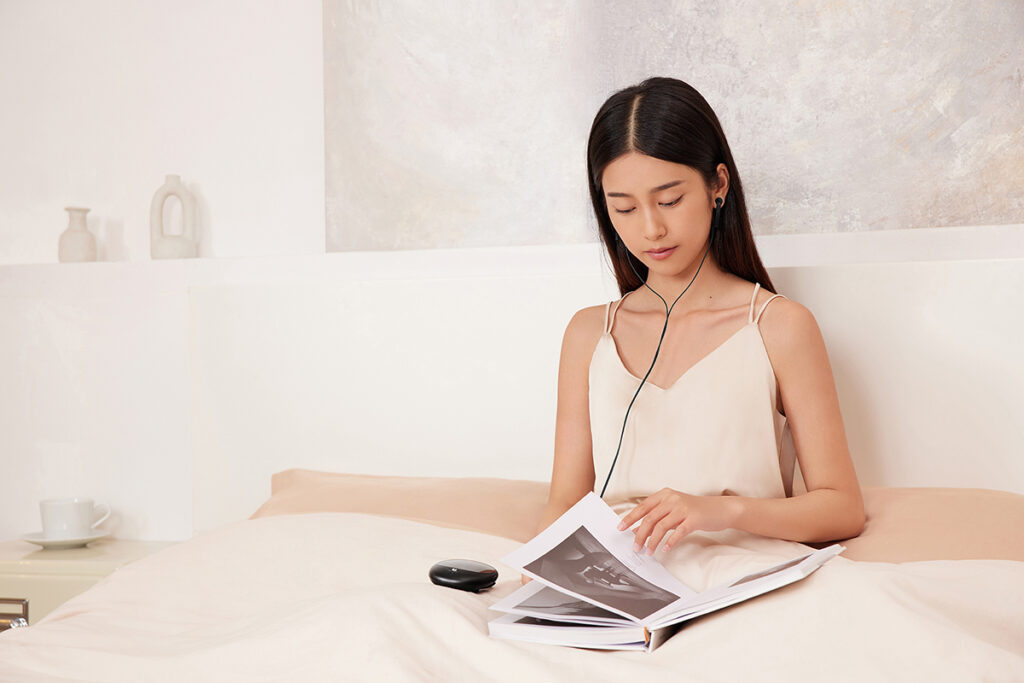
How to Use a Handheld Sleep Aid Device Effectively
To get the most benefit, proper use is crucial. Simply holding the device isn’t enough—timing, technique, and consistency matter.
1. Timing and Environment
- Use before bedtime, ideally 15–30 minutes prior to sleep
- Choose a quiet, dimly lit environment
- Avoid caffeine, screens, and exercise 1–2 hours before use
2. Correct Positioning and Operation
Depending on the model:
- Grip-based devices: Hold firmly in the palm; some models stimulate acupressure points or send calming pulses via the palm.
- Wrist models: Wrap around the non-dominant wrist; most have a start button and adjustable intensity.
- Set intensity to a low-medium level initially, then increase based on comfort and effectiveness.
3. Consistency and Duration
- Daily use for at least 14 consecutive nights is often recommended
- Most sessions last 20 to 30 minutes
- Some devices offer guided modes, such as 8-minute relaxation programs or 30-minute wind-down cycles
Consumer tip: Devices with adjustable feedback modes (e.g., intensity, rhythm, or guidance method) tend to score better in user satisfaction, with over 75% of users reporting subjective sleep improvements after two weeks of consistent use.
Handheld Sleep Aid Device vs Other Sleep Aids
| Feature | Handheld Sleep Aid Device | Melatonin Supplements | White Noise Machines | Prescription Sleep Aids |
| Mode of Action | Physical/Neurological | Hormonal | Auditory Distraction | Pharmacological |
| Onset Time | 10–30 min | 30–60 min | Immediate | 15–30 min |
| Habit Formation Risk | Low | Medium | Low | High |
| Side Effects | Minimal | Grogginess, vivid dreams | None | Dependency, dizziness |
| Portability | High | High | Medium | Medium |
Why Users Prefer Handheld Sleep Aid Devices
- Drug-free and non-habit-forming
- Discreet and travel-friendly
- No interference with medical conditions or medications (though users should always check with a doctor)
- May improve heart rate variability (HRV)and reduce nighttime awakenings by calming nervous system responses
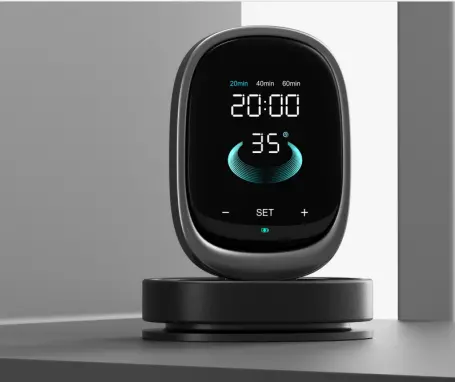
Who Benefits Most from a Handheld Sleep Aid Device?
Not every device fits every user. A handheld sleep aid device is particularly beneficial for:
- Shift workers and frequent travelers: Jet lag and irregular schedules disrupt natural circadian rhythms. These devices can help reset the body clock.
- Mild anxiety or stress-related insomnia sufferers: For those whose sleep issues stem from an overactive mind, the device’s calming effects are more targeted.
- Tech-savvy individuals: Many modern sleep aids pair with apps that track sleep quality, making them appealing to those who like quantifiable feedback.
Misconceptions and Precautions
1. Instant results aren’t guaranteed
- Most users need several nights of consistent use to see measurable improvements.
2. Not a cure for medical insomnia
- Conditions like sleep apnea or chronic insomnia should be evaluated by a healthcare provider. A handheld sleep aid device can complement but not replace medical treatment.
3. Battery and Maintenance
- Rechargeable models last 5–7 days on a full charge, while battery-operated versions may need replacements every 10–14 sessions.
- Keep devices clean and avoid moisture, especially for electrode-based models.
Final Thoughts: Using a Handheld Sleep Aid Device Wisely
Understanding how users should use a handheld sleep aid device goes beyond just pressing a button. Success depends on integrating the device into a consistent bedtime routine, knowing its strengths compared to other tools, and selecting a model aligned with personal needs.
For consumers looking to improve their sleep without resorting to medication or cumbersome equipment, a handheld sleep aid device offers an accessible and scientifically grounded option. With proper usage and realistic expectations, it can become a valuable part of your nightly wind-down ritual.

